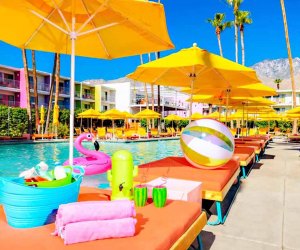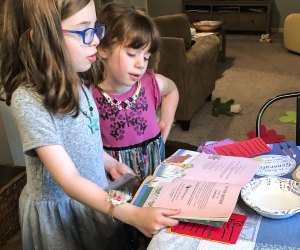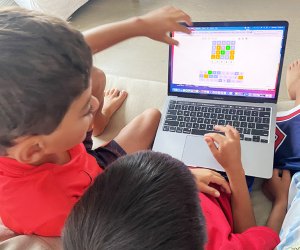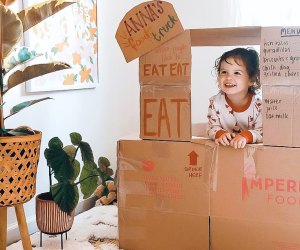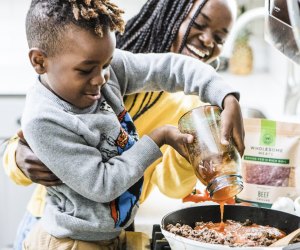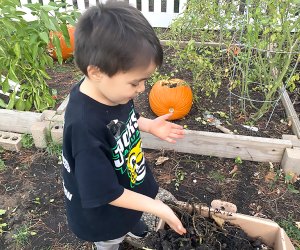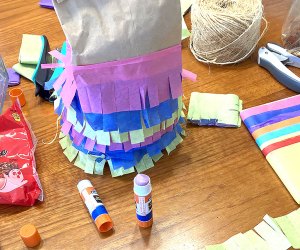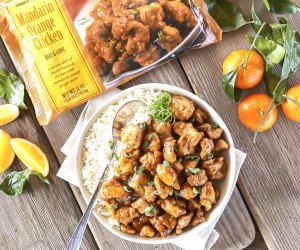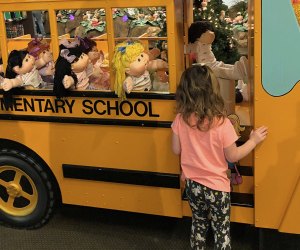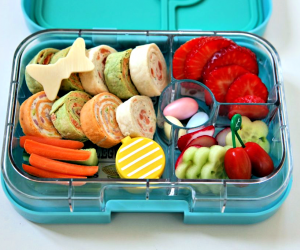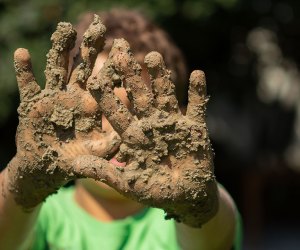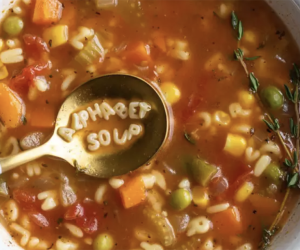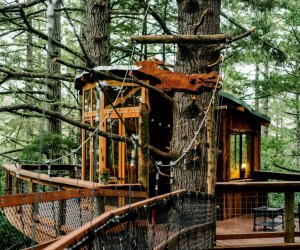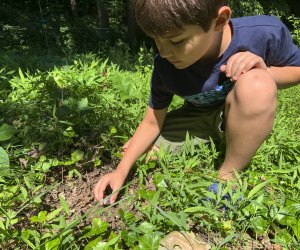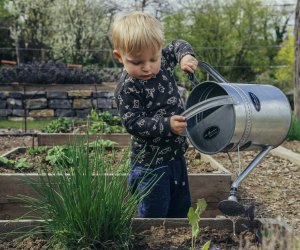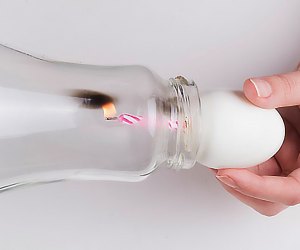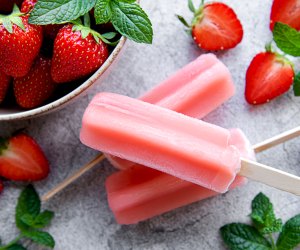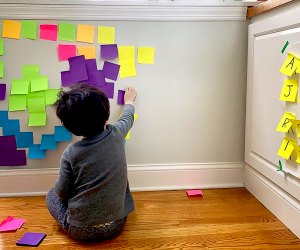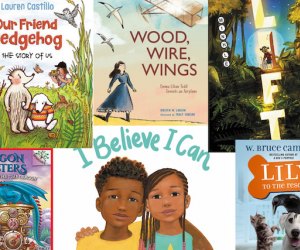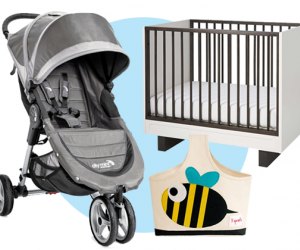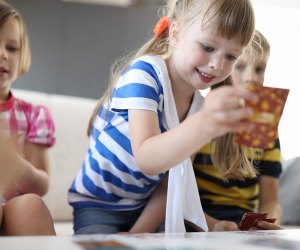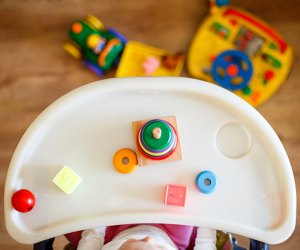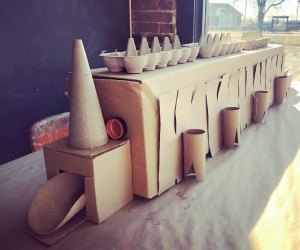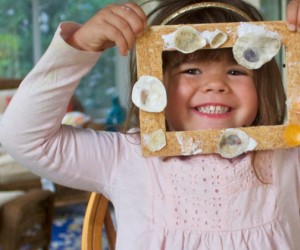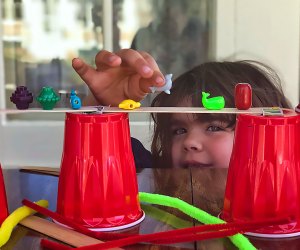Backyard Gardening With Kids
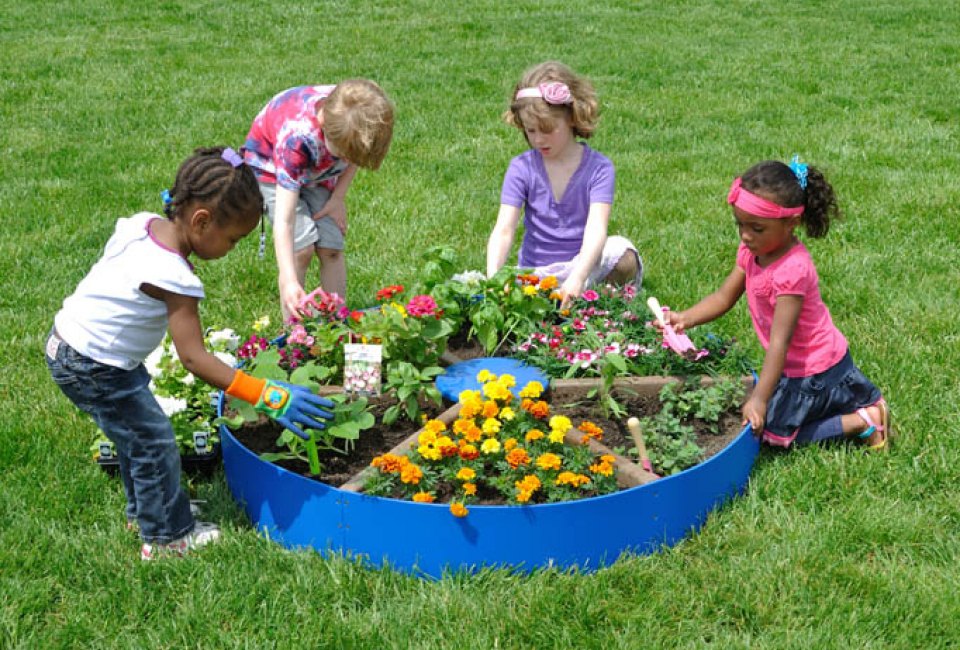
We moved our family from New York City to Long Island. Any doubts I harbor about the decision quickly dissipate the moment I see my children playing in their own backyard. Whether playing at the water table, on the swing set, or in the dirt, knowing that they have their own special place in nature makes it all worthwhile. And speaking of backyards, there's tremendous satisfaction in creating a garden.
OUR LATEST VIDEOS
Planting a seed in the ground, watching it sprout, and turning it into something delicious to eat is a wonderful thing. I spent the winter paging through gardening books, looking at design options, and deciding what to plant and where. I came across a fantastic book, Gardening Together With Children: Roots, Shoots, Buckets, and Boots by Sharon Lovejoy, and gained inspiration in involving the kids in the gardening process.
Lovejoy states, and I couldn't agree more, that the only surefire way to squash a child's interest in gardening is to impose hard and fast rules about gardening. All you need is a handful of seeds, a small plot of land, a window box, a planter, or even a pair of old boots filled with soil, and then you can plant a garden. Begin by asking your children what they would like to grow and where the garden should be planted. Read the instructions on the seed packet carefully to determine if your crop needs sunlight or shade, a lot of space or a tiny corner, and lots of water or just a sprinkling. Once that's figured out, you are ready to go.
Top Fruits And Vegetables For Kids To Plant
Pumpkins are top picks for most young planters. First of all, they are very easy to grow. I started by planting seeds in small pots in the living room, and before I knew it they had taken over. We accidentally spilled some seeds near our front porch, and they grew into beautifully round pumpkins. Pumpkins take up a great deal of space, but that doesn't mean having to clear out a space for them; they simply grow over whatever is nearby. Pumpkins spread a long vine that sits on top of the soil. Once the pumpkin reaches maturity, the vine withers away and dies. You can grow sugar pumpkins, which are smaller and sweeter and great for pies, or the larger type for carving into autumn Jack-o-lanterns. Hicks Nursery in Westbury hosts a contest each year for the largest pumpkin grown on Long Island. Children enter in a separate category and are honored for their efforts.
Strawberries are next on the list. Not only are these sweet fruits extremely low maintenance, they are fun to pick and so delicious. The Long Island native strawberry is delicate and sweeter than the kind you find in the supermarket. Start off with a few plants, and each year you can see your crop doubling - that is if you can manage to clear out a space for them.
Blueberries are another fun fruit, because they are sweet and delicious, and once planted they grow back every year. You need to plant at least two different varieties because they need to be cross pollinated.
We love corn and planted some seeds. We planted a row along the back fence because stalks tend to grow very quickly. If you have the space, another fun option is to have the kids scatter the seeds around a larger area, and in the fall you can wander through a corn maze of your own.
A row of sunflowers is not only beautiful but makes for a great wall around a child's playhouse, tent, or castle.
While not edible, a mixed seed packet of gourds provides children with endless imaginative hours. Use gourds as decorations (Thanksgiving centerpieces), or turn them into musical instruments or utensils. Late spring to early summer is the best time to plant gourds, as they seem to thrive in Long Island's summer climate.
Themed Gardens
Herb gardens are a lot of fun because of the variety of flavors, textures, and scents they provide. A few leaves of mint can liven up any glass of ice tea or water. The mint flavor provides a nice pick-me-up on a hot day. Basil is great for sauces and on sandwiches. Children easily learn to differentiate the two by their texture and smell. Wooly Lamb's Ear is great to plant in every garden because of the incredible softness of the leaves. The leaves are not only fun to stroke but make wonderful blankets for dolls and fairies.
Butterfly gardens are some of the easiest gardens to grow and can be a wonderful beginning for a first time gardener. First, clear out a small patch of soil, window box, or row of planters. Look for mixed seed packets specifically for butterfly gardens at any gardening supply store, and try to find a mix that has both annuals and perennials. Annuals bloom the first year and provide the garden with plenty of color. The following year, perennials take root and continue to provide color each year. Scatter seeds randomly and water every few days. Set up a comfortable chair nearby and photograph what blooms. Or keep a journal of your garden's guests and a field guide to Long Island's butterflies for identification.
The Pizza Patch Garden idea comes from Sharon Lovejoy's book Roots, Shoots, Buckets, and Boots, and it sounds beautifully delicious. The garden looks like a pizza and, when harvested, makes a delicious pizza pie. Map out your garden ahead of time on a large sheet of butcher paper. Draw a large circle and cut eight slices. Lovejoy recommends seven, but keep it even: one line down the middle, then another, and another. This is a great way to teach kids about fractions. Plant rows of marigolds between each slice, and they will look like cheese. Use four slices for your toppings. Lovejoy recommends eggplant, bell peppers, zucchini, and cherry tomatoes, but don't hesitate to add your favorites. Plant the plum tomatoes for the sauce in a separate slice. Fill another slice with seasonings, such as rosemary, oregano, and basil. Reserve another slice for onions and garlic and leave the last slice free for a pathway. At harvest time, pick up some fresh made dough at the local pizzeria and gather the rest of the ingredients from the garden's bounty.
Happy gardening!






